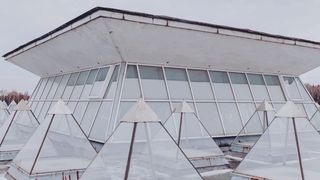Russia Invests in Home Grown X-Ray Lithography Tech
MIET has won a 670 million rubles ($8.5 million) contract for the development work.

The Russian government will provide 670 million rubles ($8.5 million) to facilitate research into X-ray lithography, reports Zelenograd. Moscow's Institute of Electronic Technology (MIET) will use these funds, from the Ministry of Trade and Industry, and push forward with its plans to develop a maskless lithographic machine based on an X-ray synchrotron and/or plasma source. Ultimately, these machines are hoped to enable processing of semiconductor wafers with 28nm, 16nm and smaller designs.
Western sanctions are leaving a heavy toll on Russia, not just on everyday products and consumer techn but on semiconductors that might be desirable to local industry (and the military). At the end of last month, the Russian government decided to provide some serious funding to local research institutes, to develop machinery vital to homegrown semiconductor business. The Russian government is also considering ways to work more closely with China.
Netherlands-based ASML supplied the EUV lithography machines that are at the heart of highly advanced fabs around the world. Companies such as TSMC, Samsung and Intel all jockey for these machines, but there are countries on advanced technology sanctions lists that aren't allowed to buy them. Russia and China are the most notable members of the ASML blacklist.
Interestingly, the source notes that Russia was involved in EUV lithography development in the 2010's. Its leading scientists decided that the work couldn't be done in geographic isolation, so some of the research (particularly to do with radiation sources) was apparently shared with and applied by ASML.
Other interesting past works in Russia included the development of the synchrotron X-ray radiation source in Zelenograd in the mid-1980s. This technology was apparently developed by forward looking scientists for the needs of microelectronics processing, but plans weren't followed through. It will now be used in this newly funded X-ray lithography research, but new devices based on it should be ready by 2023.
MIET isn't just refining a process with its X-ray lithography plans. It will have to indulge in deep research. "Our project is a research work that has no analogues: no one in the world has ever done maskless lithography on such principles,” said Nikolai Dyuzhev a director of Microsystems and electronics at MIET.
Above we mentioned that the finished design will be shooting for 28nm, 16nm and below but X-ray lithography is already claimed to have potential for work at "a resolution better than 10nm." X-rays have a shorter wavelength than EUV radiation.
Stay on the Cutting Edge
Join the experts who read Tom's Hardware for the inside track on enthusiast PC tech news — and have for over 25 years. We'll send breaking news and in-depth reviews of CPUs, GPUs, AI, maker hardware and more straight to your inbox.
X-ray lithography research is hoped to be started in earnest from November this year. By then there should have been proposed technical specifications and feasibility studies for a prototype X-ray lithography machines drawn up.
As for test production runs using any new X-ray lithography machine, we will have to wait for five years or more, according to Dyuzhev.
Considering all of that, the Russian X-ray lithography program doesn’t look likely to amount to much in practical terms. However, it might provide some worthwhile contributions to the body of semiconductor manufacturing science.

Mark Tyson is a Freelance News Writer at Tom's Hardware US. He enjoys covering the full breadth of PC tech; from business and semiconductor design to products approaching the edge of reason.
Most Popular



